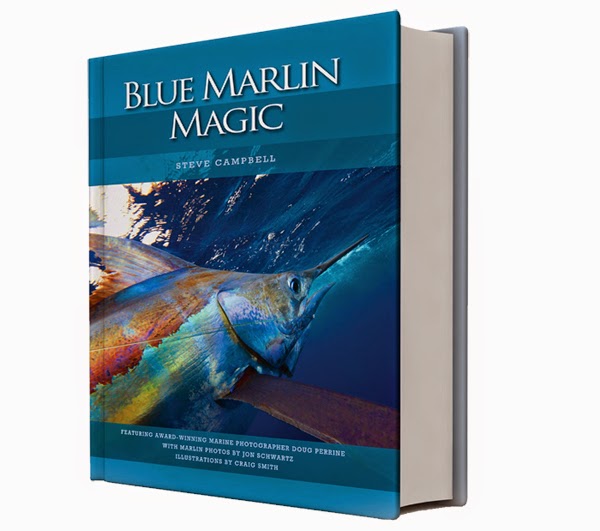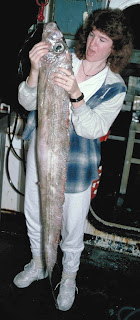 |
| Isabel Schwartz, Michaela Kasper, and Celeste Schwartz with giant cubera snappers. |
I'm a part time freelance writer and photographer for fishing mags, but this trip to the East Cape of Baja was strictly for fun.
I didn't want to jinx the trip and tell the girls that we might score some trophy gamefish, so I tried to keep expectations low. Meanwhile I was dreaming that they'd battle big tuna, marlin, the exotic roosterfish, or the even rarer cubera snapper.
 |
| Giant cubera snappers lying on the deck of the boat. |
We stayed at Rancho Leonero Resort in the East Cape of Baja on the Sea of Cortez, and chartered the fishing boat the Jen Wren III. I'd been to Leonero many times, and had even taken these daughters when they were four and six. It's far away from the hustle and bustle of Cabo San Lucas.
When we arrived, it was like stepping back in time. The smell of the palapa huts took me back to younger days in Baja when I caught mahi mahi and marlin from kayaks (videos here and here)
The first morning we left the dock at 7:00 and bought bait from guys who filled their small pangas with water to hold bait fish called caballitos.
We then went to the famous lighthouse at Punta Arena, the roosterfish capital of the world.
Roosterfish are super exotic fish named after their dorsal fins that look like, well, rooster feathers. You can see them here in a photo I took for Sportfishing Magazine.
We then went to the famous lighthouse at Punta Arena, the roosterfish capital of the world.
Roosterfish are super exotic fish named after their dorsal fins that look like, well, rooster feathers. You can see them here in a photo I took for Sportfishing Magazine.
Roosters are very finicky and hunt in packs; you can often see their dorsal fins break the water's surface as they cruise the beaches looking for sardines and mullet, their favorite prey. I'd caught some huge ones in the past on my kayak.
The girls insisted on holding the rods and hooking the fish themselves. Doing so with live bait takes practice, and as much as I wanted to give them the satisfaction of doing it without help, I admit I was a bit worried that a big fish would take the bait and they'd panic, try to set the hook too soon, and the fish would get spooked.
Mark Raynor, Jen Wren's owner, has onboard top quality aluminum reels made and graphite rods- ultra light and strong. They're tiny but can handle big fish. Loaded with thin, braided line that has no stretch, one can feel every twitch of the tail and head shake the fish makes, which can be very nerve wracking.
Captain Diego started a slow drift near the beach and mate Pollo the rigged a caballito by bridling it with a hook. This enabled the fish to swim around freely and attract larger predators.
As we're trolling three live baits, one of the girls' rod goes bendo and the reel starts screaming...it's a big fish! Our friend Michela Kasper takes the rod and the battle begins. She gets flustered when the fish takes back all the line that she's gained after ten minutes of battle, but she's about 5'11", and trains year round for college volleyball. One crank at a time, she gains back the line.
At some point in the fight I start thinking, what IS this? I've caught a lot of monsters right here, but this isn't fighting like a rooster, or a jack crevalle, or tuna. Its got more of a temper and keeps making desperate dives for the rocks, trying to break itself off. Captain Diego and his mate Pollo won't hazard a guess so we're all wondering what she's battling- and I'm scared something is going to go wrong. Maybe this fancy tackle will go bust! I've never used anything so tiny.
Finally, the fish comes to color. We can see the first glimpses of the fish's glow, but it's not white like a rooster, it's ORANGE and YELLOW and HUGE!! I start freaking out because I realize it's a trophy size cubera snapper- one of the few fish still on my bucket list.
Big cubera snappers, also called dog-toothed snappers, fight like beasts. They have these gnarly snaggled teeth spaced out far so they look like a cartoon.
They are caught here, but not very frequently. They usually lay in rocky structures, and many an angler has heard their reel scream followed by their line snapping when the fish swims back into a hole.Michaela reels it to the boat and I'm terrified it's going to break line at the last minute. That just recently happened to my daughter Celeste and I on a 100 plus pound bluefin tuna near San Diego and I don't think I could stand another heartbreak.
Thankfully Pollo brings it on deck. The photographer in me comes out and I (somewhat rudely, according to my daughter Isabel) tell Michaela she's gotta pick it up so I can get a photo.
Michaela doesn't feel inclined to pick it up because it's huge and weighs a lot, but I say WHAT?? PICK THAT THING UP!!! NOW!!! C'MON!!! again and again until she does so. She's a 5'11' college athlete so she manages to do so, making it look easy. Believe me, it wasn't; you will see a photo on the bottom of this blog that proves this.
Into the cooler it goes! We put out baits again, and 20 minutes later another rod goes off. I can't remember who hooked it but it's Celeste's turn. She's a more experienced angler, but this fish is changing directions, darting, peeling line, swimming towards the boat which can make the hook come loose, all the tricks in the books. Again, what is it? ANOTHER CUBERA!!!
Now I'm really freaking out. Everyone on the boat is hooting, we all realize this is very unusual to hook, let alone land, two of these in one day. Our trip is already made! Not much time is left in the day; in 20 minutes and it'll be time to motor back. OK, let's put in another set of baits...
Isabel is holding a rod and something takes her bait. She sets the hook, and she's on! She's 5'9" and strong and starts reeling the fish in, grimacing and grunting.
The fish heads straight away and then out to sea. It's taking so much line off the tiny reel I'm actually worried that he might get spooled (as in, the fish takes off with all of the line).
Isa will not give up. The wind and waves have picked up so water is splashing over the rail of the boat into her face and the boat is heaving around. I'm providing moral support but she's doing it all, and correctly too. It's great to see my child struggling against something and trying her best to win.
She is usually very calm so I don't get to see this intense side of her. Her arms start shaking and her back is cramping, so I hold the fighting harness for her and keep her spirits up. I'm worried the line is going to snap, because she's putting so much pressure on it. I keep telling her it's there's only a little ways to go but I'm lying and it's obvious. Every time the fish takes back all the line she gets crushed.
As much as the other girls had to battle, this is on another scale. I'm starting to feel sorry for Isa and wonder if she's even enjoying herself or in serious pain, but I figure if I take the rod she'll be demoralized. She's put way too much into this.
Eventually she starts gaining more than she loses, and its coming up, then it darts away and comes closer, and then up. And it's...a THIRD CUBERA but this time a TRUE MONSTER!! Everyone on the boat is in shock. The last few seconds can be fatal though, and until mate Pollo hoists the fish into the boat, the line can go, so I beg Pollo, PLEASE GET IT IN THE BOAT!
Isabel straight refuses to try to hold the fish up. I'm not sure of she could, as she's spent anyway. She will, however, pose next to the fish with Pollo holding it.
I tell the girls to each hold theirs up for a group shot and she tells me I need to chill out, but I'm not giving in. We end up with Michaela holding Isa's monster, Pollo holding one in front of Isa, and Celeste holding the third. Epic shot I'll be showing off for the rest of my life.
We get back to the ranch have the East Cape Smokehouse process the fish. By 7:00 the guys from the smokehouse meet me at the dinner table with a receipt for 35 pounds of vacuum packed fresh snapper fillets, which we bring back to the states in a box made for transporting fish
I told you I'd show you a photo that proves how heavy the cubera snappers were. I told the girls, "You wanna see how strong your dad is? Watch me hold them all up!" I almost exploded trying to raise two, and couldn't. These things were beasts!
We spent the rest of the day on the beach, in the pool, eating chips and guacamole and salsa by the bar, and laying on the hammock.
No better way to end the trip to watch a Sea of Cortez sunset.
NOTE: Two days later we caught a massive roosterfish big enough to stun even the world's foremost roosterfish experts. Check back in a couple of days for that story on my blog.
































